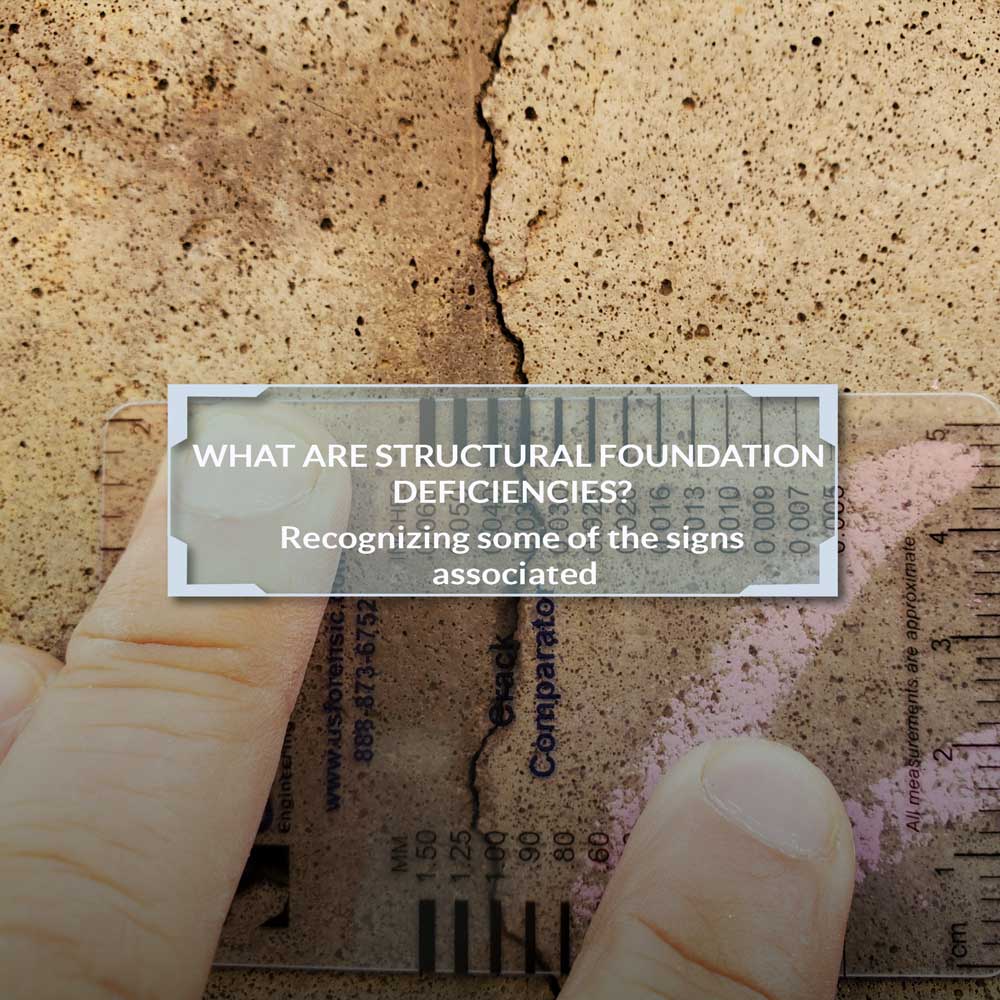Have you ever noticed cracks along your walls, doorways, ceilings, or windows? Do you find that over time your windows are distorted, and your doors don’t fully close? Well, these might be signs of what we call structural foundation deficiency. Being aware of these signs is crucial, as you can recognize and address them before they become expensive repairs. In this article, we will cover what these deficiencies are, what can cause them, and what to do about them!
Table of Contents
What are structural foundation deficiencies?
A structure can be anything made up of smaller components to form something complex, like a home. Your home is made up of walls, foundations, ceilings, and many other things to support the structure. Now, when it comes to foundations, this can include the important parts of a home, like the doors, windows, ceilings, walls, etc. If you look outside of your home, chances are you are surrounded by soil or some form of sediment. Over time, this sediment will shift or settle around based on environmental factors, which is normal.
However, when this shifting occurs, it can place new or unexpected stress on some of the foundation in your home. Sometimes, this stress or pressure can be overwhelming and lead to cracks, leaning, or sagging. Settlement, moisture effects, bowing and leaning are all deficiencies associated with foundations. Some of them are normal and expected with age. Others should be reviewed and addressed under the guidance of a qualified professional. Only a site assessment can truly tell.
What is the big deal?
Many might ask, “so why should I care?” Well, your home was built and designed to be structurally sound and not collapse. However, when the surrounding settlement places undue stress on the foundation of a home, it can be a recipe for disaster. When floors begin sagging, walls begin leaning, and cracks appear, these are early warning signs. Over time, these can worsen and lead to structural compromise meaning the increased likelihood of collapse. Translated, this means outrageous costs to fix that damage!
What are some early warning signs?
Any untrained homeowner can have trouble recognizing some of the signs associated with structural foundation deficiencies, but there are some basic signs. Here are some:
- Doors beginning to jam or failing to latch
- Cracks begin appearing in walls, especially over doorways, windows, and where ceiling meets wall
- Cracks opening in vinyl or ceramic tile over a concrete floor
- Windows no longer opening or closing easily, especially if they are doing so completely
Although this isn’t an exhaustive list, these are some of the most common early warning signs.
What should I do?
Since we have covered what these structural foundation deficiencies are, let’s discuss what to do about them.
Now, like most homeowners, no one is qualified to self-assess their own home. In this scenario, a structural engineer would be the first person to call. Their expert knowledge of structural integrity can truly evaluate whether a home is experiencing these foundational problems. This is especially true when observing some the early warning signs as mentioned before.
Remember, neglecting a home is a recipe for disaster when it comes to cost and safety. Addressing these problems early on can help you avoid significant costs down the road.
Do you have structural foundation deficiencies? If so, call Sabio Engineering Services at (929) 381-0300 or visit our website Sabioengineering.com.
Sabio Engineering Services


